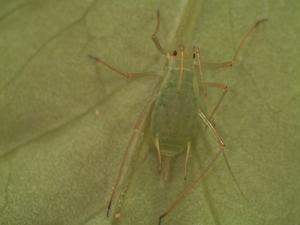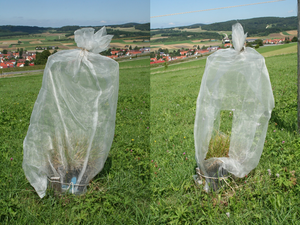Project C3 Krauss
Timing and phenology shifts in interacting plant – herbivore – predator systems
Summary
Biotic interactions between species are central drivers for the coexistence of species and species diversity. Thereby timing and phenology of species must be harmonized to allow such interactions. If one species changes its timing, while an interacting species does not, it will lead to temporal mismatches with a disruption of the interaction and with possible fitness consequences. Temperature changes, e.g. due to anthropogenic climate change, can affect species in different ways and not all species will shift their timing in parallel. The central questions of this project are:
- How is wing production and fitness in different aphid morphs affected by changes in temperature, day length and environmental stressors ?
- How is the timing and fitness of interacting species in a multi-trophic system – a grass species with and without endophyte infection, a grass aphid and its specialized predator – affected by global change (e.g. enhanced temperature and nutrient supply)?

Fig.1: Acyrthosiphon pisum (pea aphid) with unborn embryos on Pisum sativum (pea) (courtesy by Jens Joschinski)

Fig. 2: Exclosure experiment, a) with exclusion of aphid predators and b) free access of aphid predators (courtesy by Carmen Börschig)
Publications
Other publications (not peer reviewed)
Joschinski J (2016) Benefits and costs of aphid phenological bet-hedging strategies. Research Ideas and Outcomes 2: e9580. doi: 10.3897/rio.2.e9580





